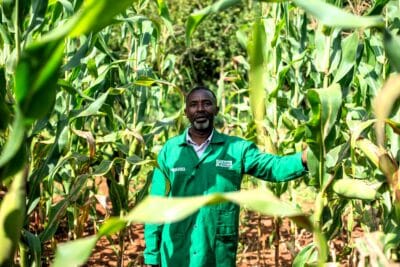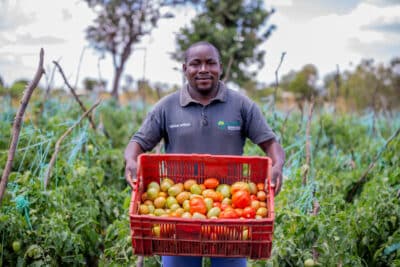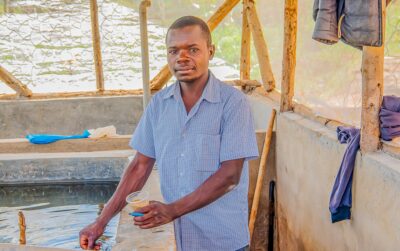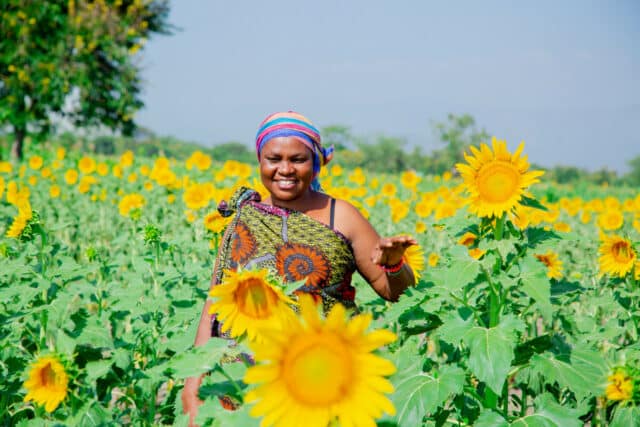News
Kenya
28 March 2023
How regenerative agriculture is building farmers’ resilience to climate change
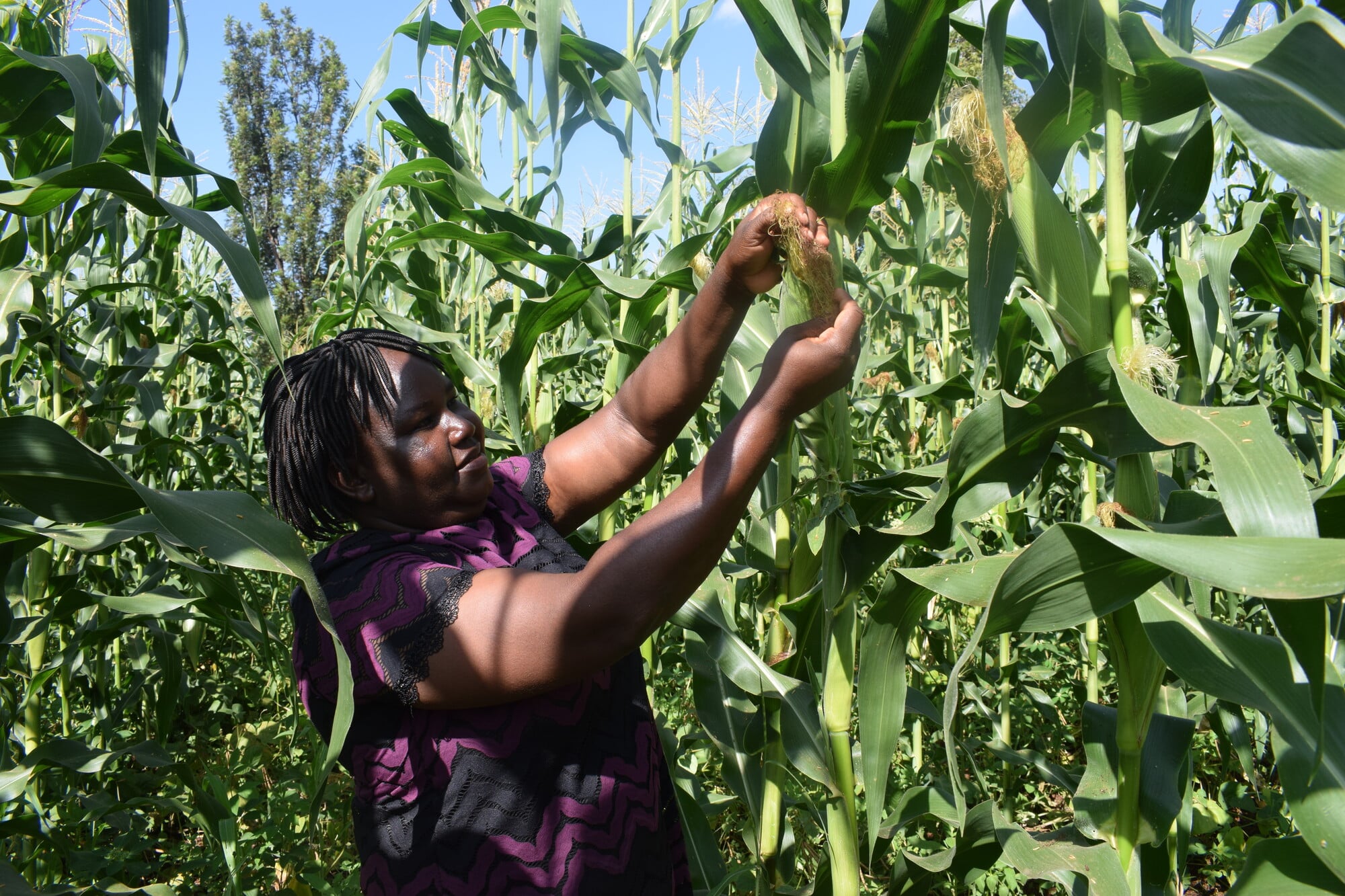
Photo: Farm Africa / Caroline Karuitha
Before joining Farm Africa’s Regenerative Agriculture project, 34-year-old Mary Karimi from Miomponi Village in Tharaka Nithi County, Kenya, who had never heard about regenerative agriculture, would plant seeds from her previous harvests and only use a little fertiliser or manure.
These practices depleted the soil’s nutrients, leaving her with just two 90-kg bags of maize and mung beans from three acres of land, a situation that left the mother of four struggling financially. Reeling from the January 2023 drought, neighbouring farms in Mary’s village had nothing to show but withering crops.
Regenerative agriculture involves farming practices that rejuvenate soil fertility and reduce carbon emissions, such as nitrogen-fixing, where crops such as climbing beans are planted, which gives vital nutrients to soil, helping plants around them grow.
It is essential as agricultural production and food security are increasingly under threat in Kenya’s highlands, burdened by risks such as climate change, as well as soil degradation, caused by overgrazing, over-cropping and poor farming practices.
When Farm Africa started implementing the Regenerative Agriculture Project in Tharaka Nithi, with funding from AGRA, she gladly agreed to join and become a village-based advisor, who help to train and advise other local farmers after being trained by Farm Africa.
After being trained on how to set up a demo plot, she established four small ones on a quarter of an acre and planted an intercrop of maize and mung beans using certified seeds. She used different combinations of fertiliser, manure and mulching on three of the plots, as well as a control group with no regenerative agriculture methods on the other.
“The plot with fertiliser, manure and mulching has performed the best. The other two also look good but the one with no regenerative agriculture did not do well,” she noted.
"If all the maize in my farm looked as healthy as it does in this demonstration plot, I would be very much ahead."
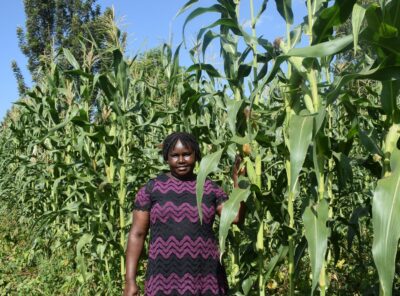
Mary Karimi
Farmer, Tharaka-Nithi, Kenya
Just next to the demonstration plot is another one-acre section where Mary had planted maize using conventional methods. Although the maize crop on this farm was planted two weeks before the demo plot was established, it doesn’t look nearly as healthy, tall and green as the one on the demonstration plot where regenerative agriculture methods were used.
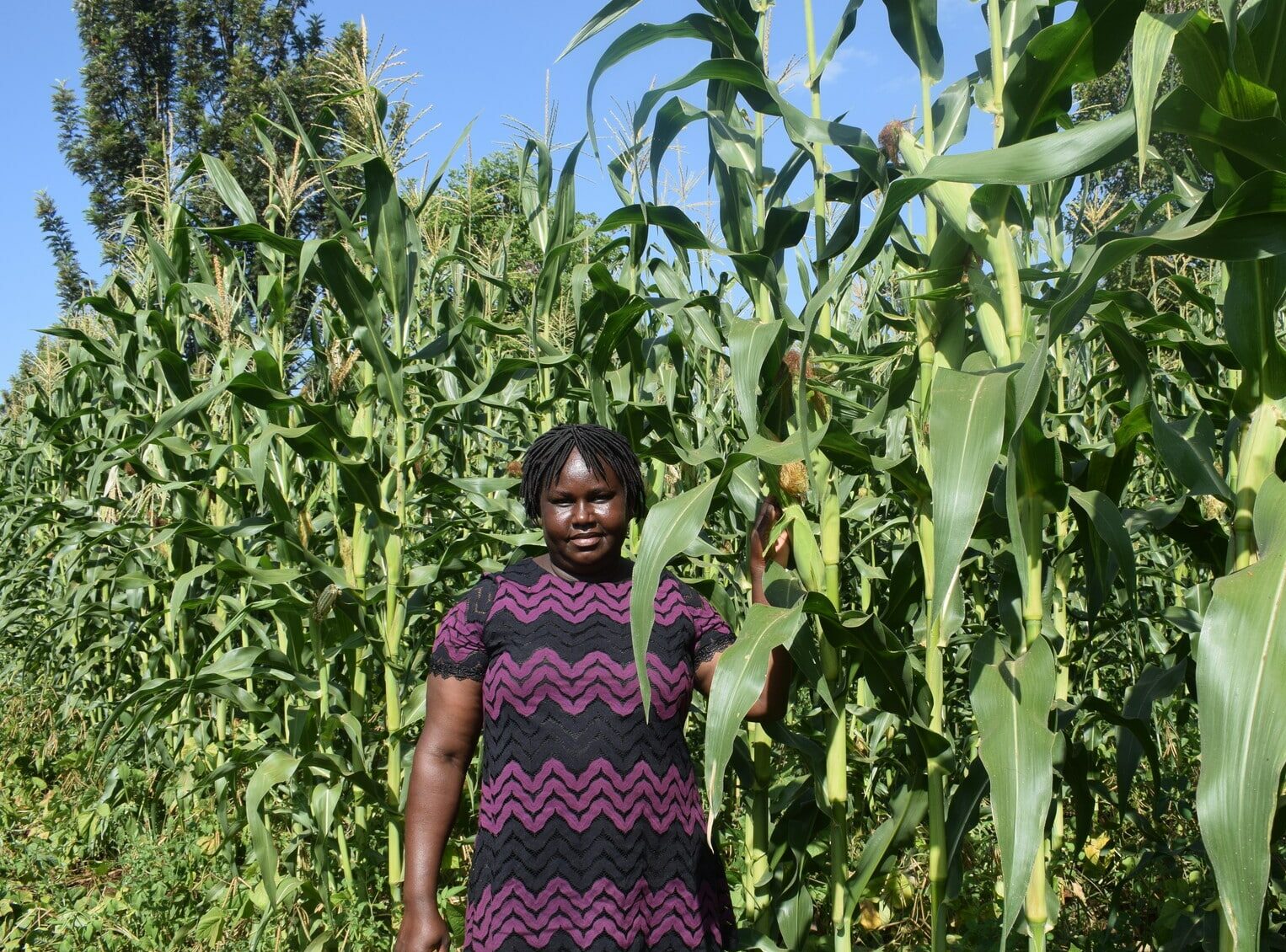
Photo: Farm Africa / Caroline Karuitha
Mary uses her demo plot to train the 200 smallholder farmers she is in charge of as a village-based advisor on regenerative agriculture practices such as mulching and crop rotation. She reports that most of them have embraced regenerative agriculture after seeing the results on her farm.
She also started a table banking initiative, whereby farmers in a village are encouraged to save some money every month and put it into a fund, from which other farmers are able to take out loans for projects or businesses.
During the next planting season, she plans to plant maize, mung beans and sorghum on one acre, employing regenerative agriculture farming methods to maximise her production.
